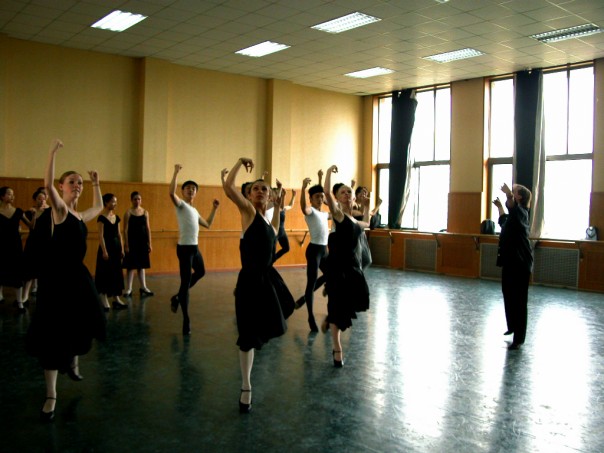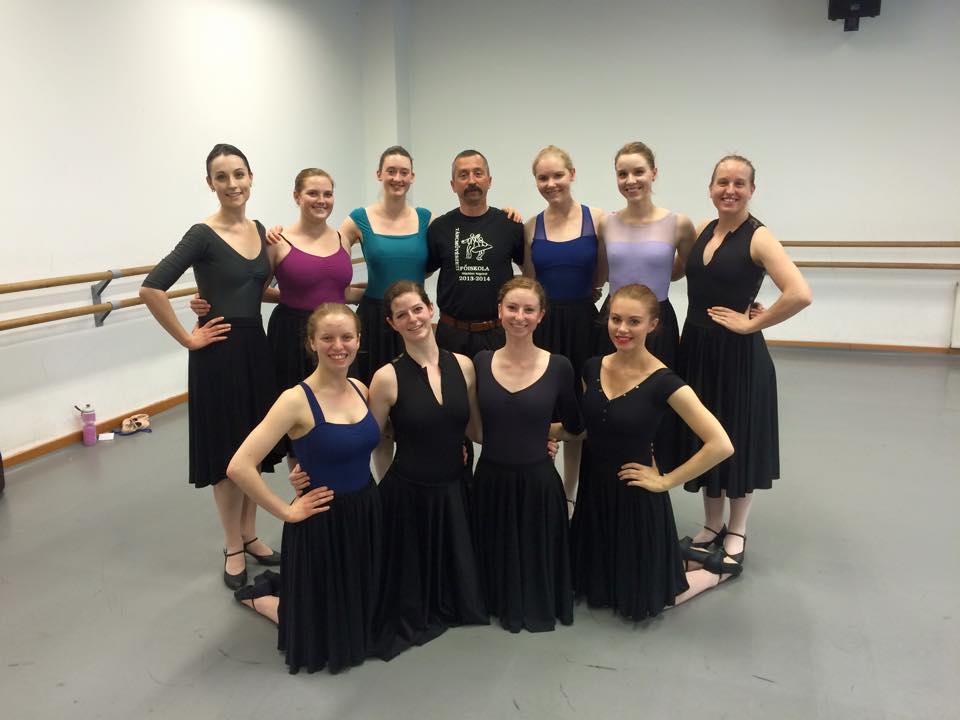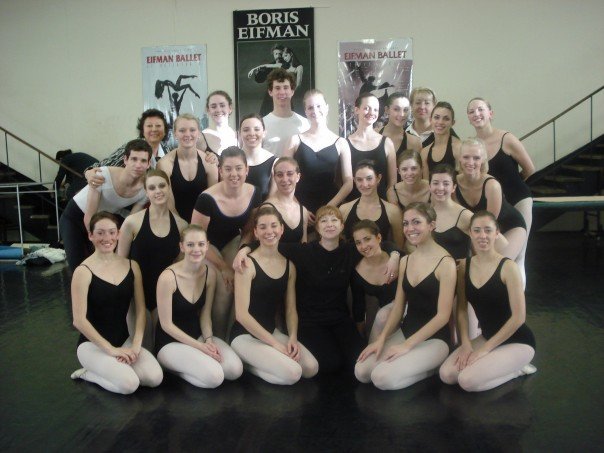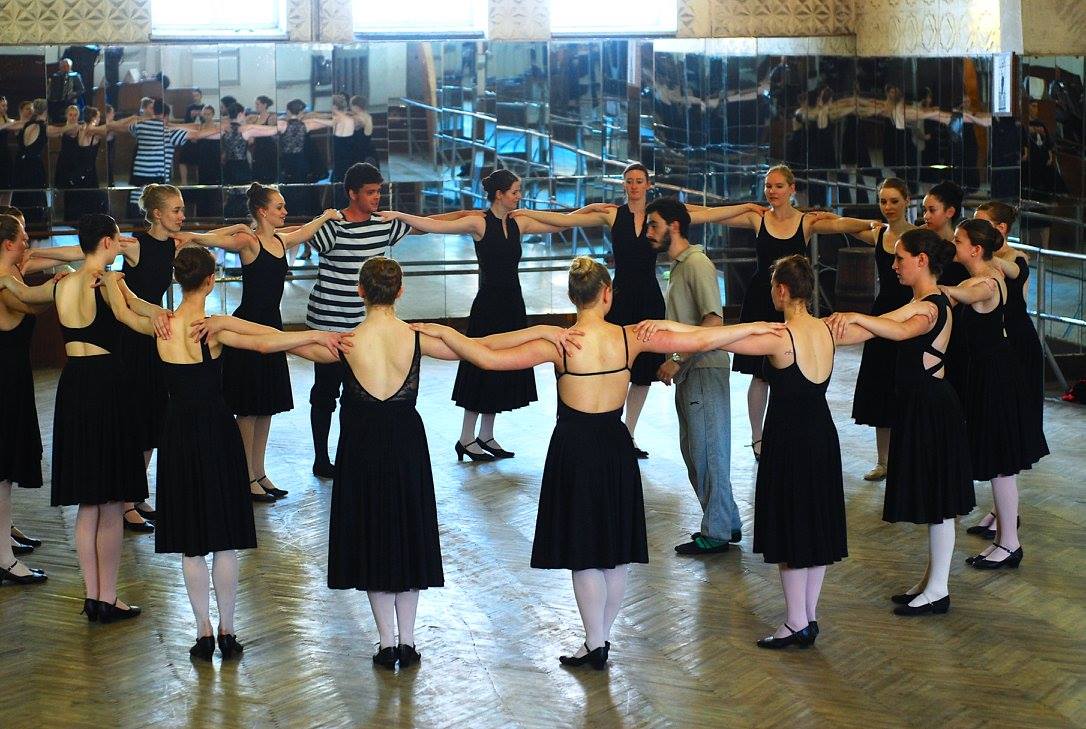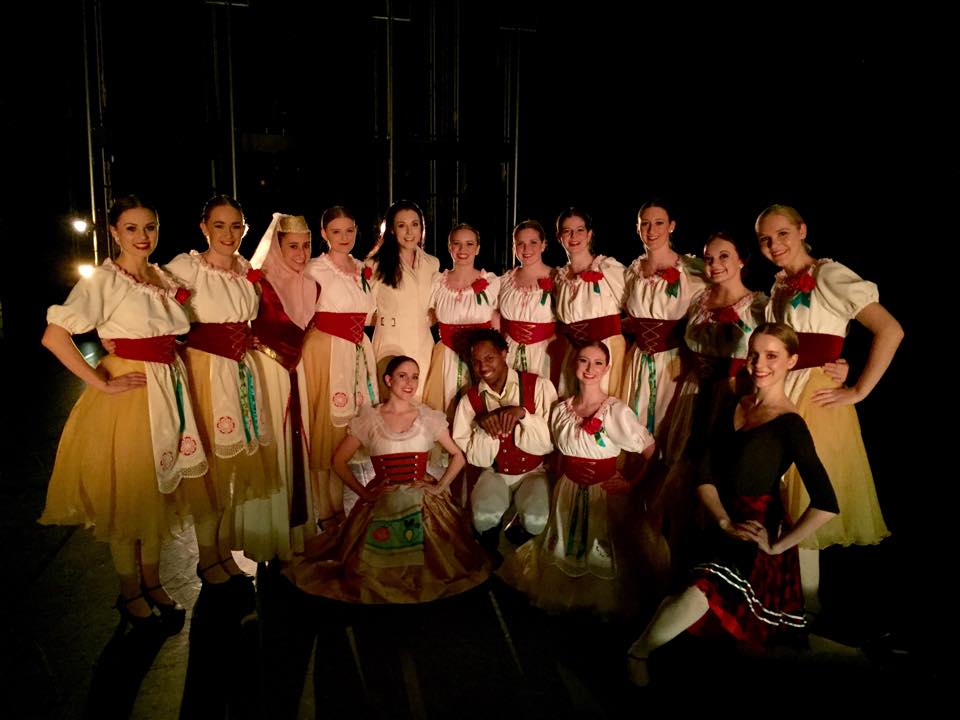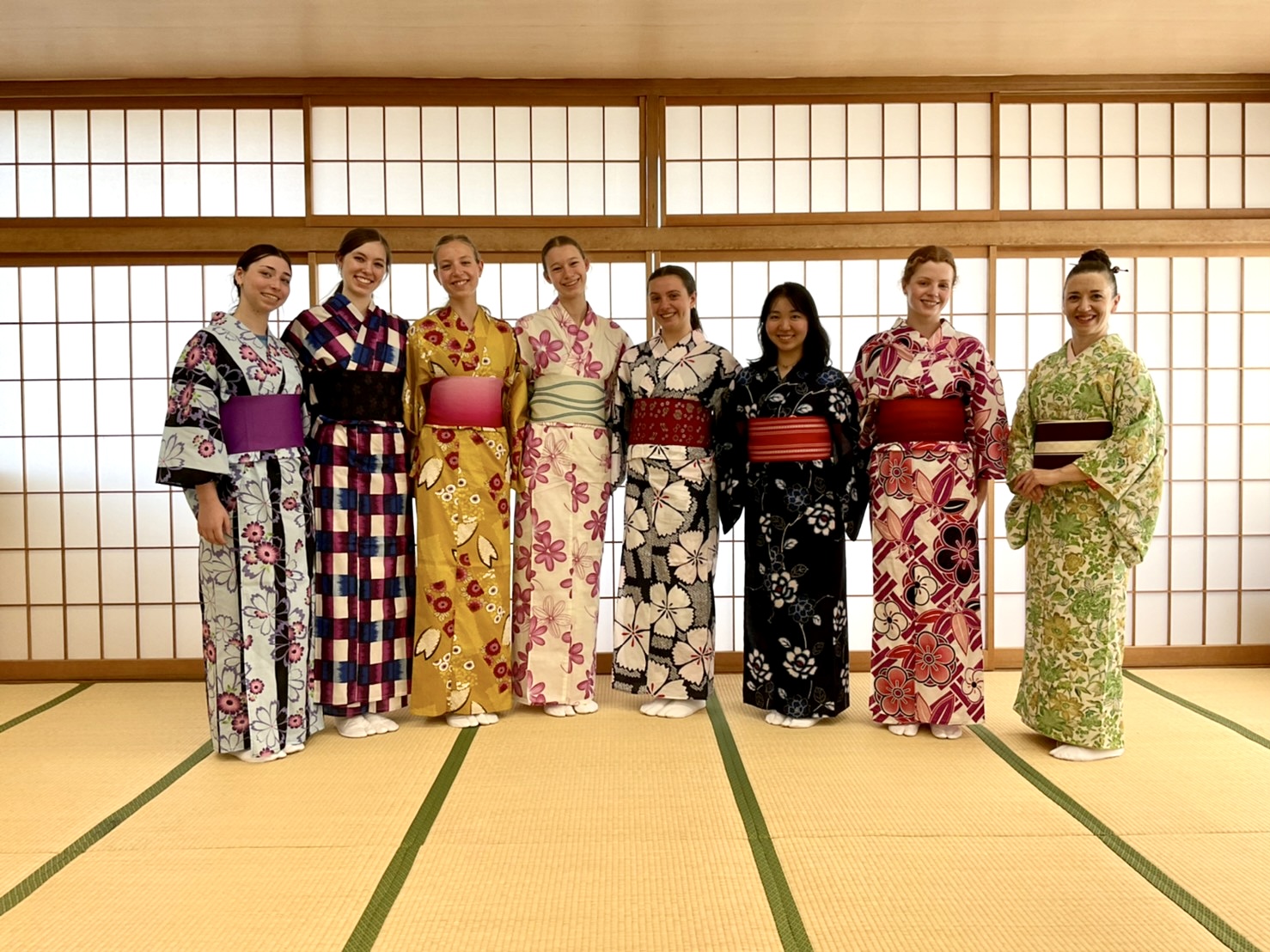CDE performing “Gragnili Baliki” with Eastern Arts, 2019, Photo: Mickey Hoelscher
WRITTEN BY JULIA LYON
After the pandemic prevented the Character Dance Ensemble (CDE) from traveling for three years, the School of Dance student group finally crossed the globe once again to dance and learn this spring. Fourteen students flew to Tokyo in May to study traditional Japanese dance — and perform CDE repertoire.
“It’s eye opening to see how much dance there is around the world and to be a part of it,” said Megan Lynch — a senior double majoring in ballet and history and the CDE president.
As a freshman, Lynch had hoped to go to Japan with CDE in 2020, but — like everyone else — her world turned virtual in March that year. So the School of Dance brought the world of dance into students’ living rooms.
Once a month, students learned from dance experts in Afghanistan, the Blackfeet Nation, Uzbekistan, West Africa, and more. One class, with an Azerbaijani dance teacher, particularly stood out for Lynch.
“It was midnight his time and morning for us and it was the most amazing experience,” she recalled. “We were all in our living rooms dancing together.”
Richard Wacko, then a dance professor at the U, founded CDE in 1995. Students who had taken the ballet character class wanted a chance to perform. The school was frequently getting requests for performances of dances from other countries. The group, which eventually became a student club to allow them to fundraise, started touring a few years later.
The ensemble has helped generations of students learn more about character dance, which can be described as “balleticized folk dance.” Typically, CDE travels to a different country each year so students can learn and perform.
“Traveling to different regions allows for the discovery of nuances and context, so we may enhance our movement and avoid a caricature of a culture,” said Justine Sheedy-Kramer, the CDE faculty advisor, who also danced with CDE as a student. “We can learn more about where these movements came from and whether what we’re presenting is accurate.”
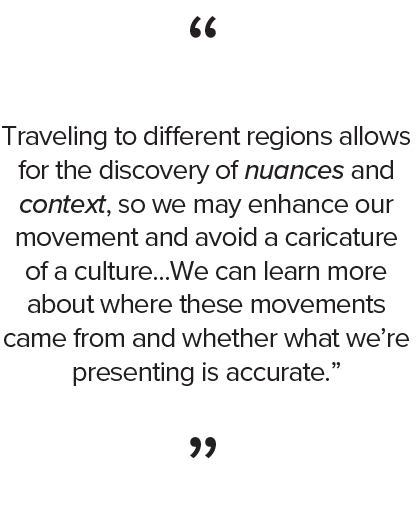
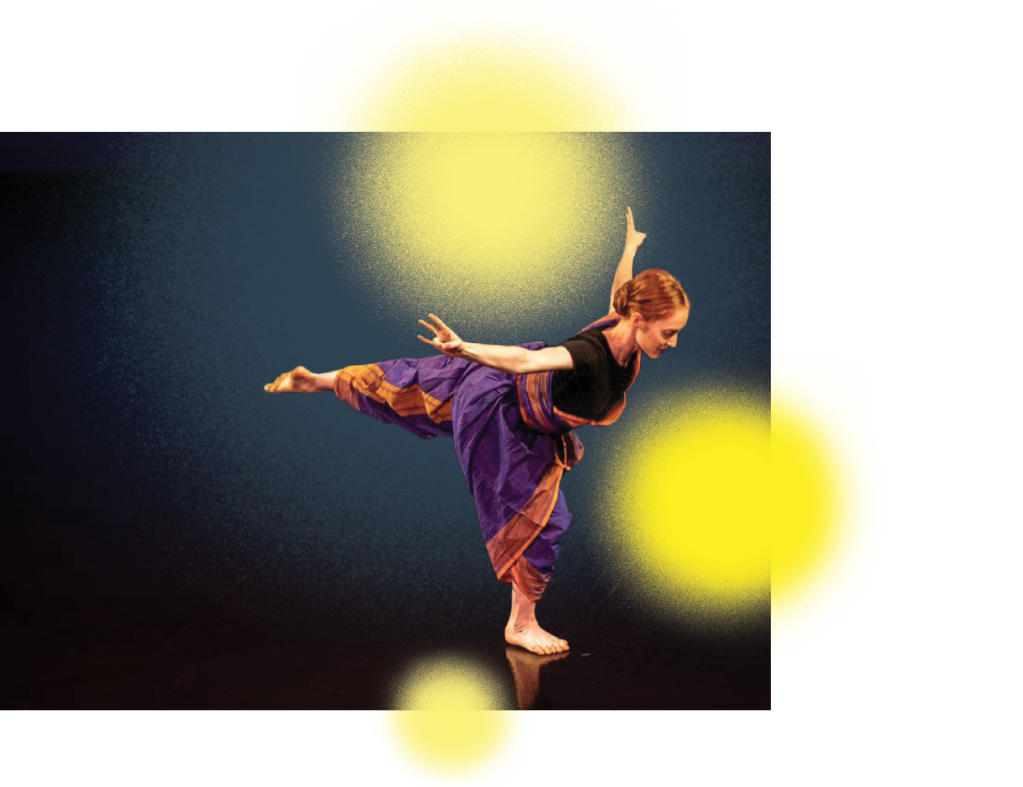
Megan Lynch performing in a preview of “Sangam” with Nitya Nritya Foundation, 2022, Photo by Venkata Harsha Nori
The character dances in major full-length ballets such as “Swan Lake” and “The Nutcracker” originally introduced audiences to more exotic parts of the world.
“People couldn’t travel to those countries as easily — it was kind of this mystery,” Sheedy-Kramer said.
More than 100 years later, she believes studying the roots of those dances can benefit students now and in the future.
“If we can supplement classical ballet repertoire with primary source material, it helps dancers and teachers gain a better understanding of authentic movement and cultural context,” she said.
Over the years, CDE has built up a repertoire of character dance from around the world, some of which they performed in Japan this spring. That includes dances from Ukraine, Belarus, the country of Georgia, and Bulgaria. The students often return from an international trip with an expanded repertoire.
After their 2019 trip to the Czech Republic, they brought back a dozen different dances from that country and surrounding regions. But the trips don’t only teach them about dance. They become a window into a different country’s culture and history.
During a 2008 CDE trip to the Basque region of Spain, the students danced all morning with local dancers, ate with them, and then came back and danced some more.
As the students danced, they could see some of the local dancers’ young children dancing on their own nearby. And dancing better than they were.
“Because they were dancing from the time they could walk,” Sheedy-Kramer recalled. “It was so engrained in their culture.”
On that same trip, the students went to a village in France and watched a play about spring renewal that included dances and rituals that had been handed down for hundreds of years. Part of the theatrical performance the students watched included the slaughtering of a lamb.
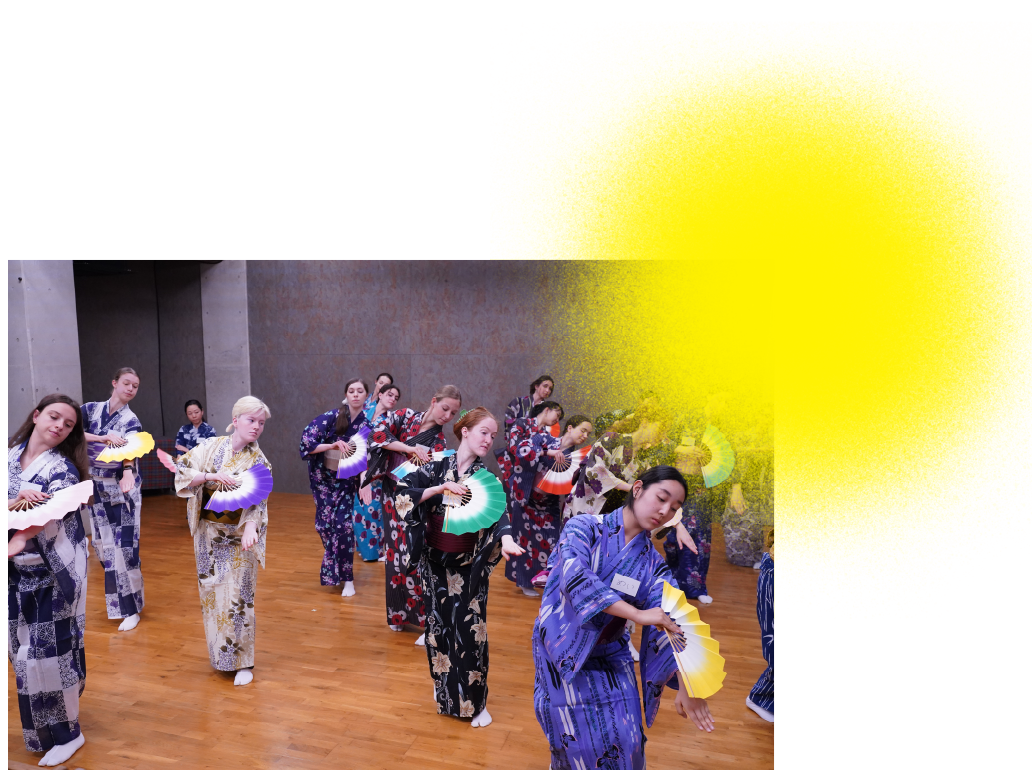
CDA taking class with Nihoh Shizuka and the Nihoh-kai Ensemble in Japan, 2023, Photo: Kyoko Shichi
“That was shocking, but that was part of the tradition,” she said.
On a 2004 CDE trip to London, the audience began to clap and unexpectedly joined the students onstage during their performance of the national dance of Afghanistan.
“We realized this was much more than us learning the steps,” Sheedy-Kramer said. “It turned out many of the audience members, who were Afghan immigrants, hadn’t seen the dance or heard the music since leaving their country.”
Whatever country the students visit, they attend dance performances and study with master teachers. That can range from experts with the Mariinsky Ballet in St. Petersburg, Russia, to the Beijing Dance Academy in China.
“You’re here to learn,” Sheedy-Kramer tells the students. “But also to be an ambassador for dance, the nation, and the University of Utah.”
CDE members raise money throughout the school year to pay for the trip. That includes flower sales at student shows, fundraising nights at local restaurants, and even having a pie thrown in their faces on Halloween.
“I got pied in the name of going on an international trip,” said Lynch, the senior. “It seems a worthy cause.”
The students also offer their own master classes in Utah, which sometimes bring in donations.
“We aim to share all our resources as far and as wide as we can,” Lynch said.
As she sees it, CDE is a “hidden gem” at the School of Dance. They rehearse one night a week, often after most dancers are gone for the day. Many students have already spent eight hours dancing before CDE rehearsal even begins.
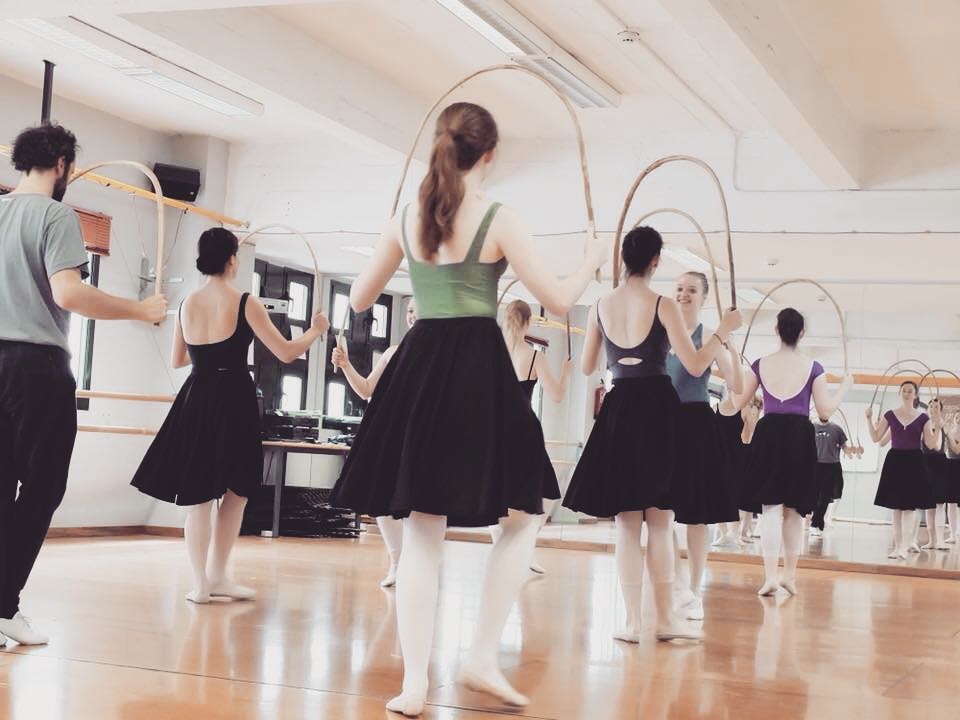
CDE studying with Dantzan Dance Company in the Basque Region, 2017, Photo:(cc) by-sa Josu Garate / Dantzan.eus
“There’s a great deal of dedication and commitment by the students,” said Christine McMillan, the Ballet Program Head.
Every ballet BFA major is required to take a character dance class, typically during their freshman year. Joining CDE allows students to go deeper. And CDE is continuing to broaden its repertoire.
Though most character dance in ballet tends to be from European countries, Sheedy-Kramer, the CDE advisor, is expanding the definition of what some people traditionally consider character dance in ballet.
“She’s making sure we have a broad understanding of many cultures with traditional dances,” McMillan said. “We talk a lot about versatility within the dance profession. Dancers today are expected to do so many different styles. Through CDE those students are exposed to a variety of different movements and different music that enhances their overall ability to pick up details of movement, timing, and phrasing along with developing a greater appreciation for how dance exists in a variety of contexts.”
As the CDE dancers prepared for their trip to Japan, excitement was high among the close-knit group.
“I know it will be beyond rewarding,” Lynch said. “Not just the things I learn, but the experiences I have with people I know so well.” ■



